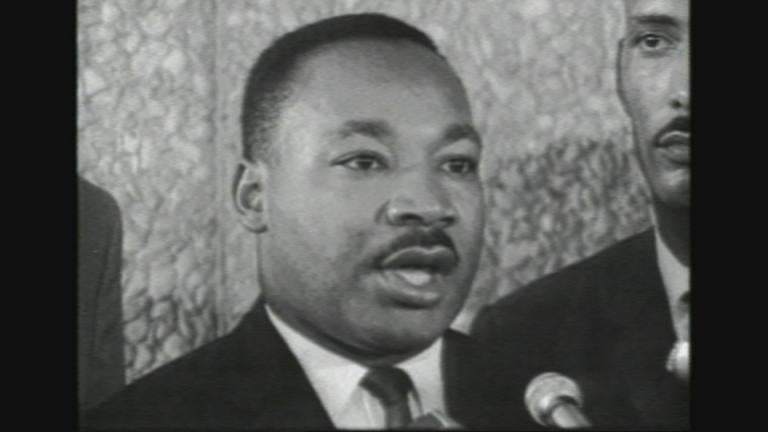It is a moment seared in the memories of so many Americans: the day in 1968 they learned that civil rights leader Martin Luther King Jr. had been assassinated, gunned down by a sniper as he stood on the balcony of the Lorraine Motel in Memphis, Tennessee.
Here in Chicago, King’s murder touched off three days of violent rioting, mostly on the city’s West Side.
The Rev. Jesse Jackson was there when King died. He shared his memories of that day – exactly 50 years ago – with Chicago Tonight.
Jackson recounted the trip to Memphis, and how King was feeling especially low and considering giving up his heavy burden.
He says King had a migraine the night before his death and didn’t feel like speaking at the Memphis church where he’d been invited. But Jackson and the Rev. Ralph Abernathy eventually convinced him to meet them at the Mason Temple Church of God in Christ in Memphis, where he delivered what would be a prophetic speech.
“Like anybody, I would like to live a long life,” King said. “Longevity has its place. But I’m not concerned about that now. I just want to do God’s will, and he’s allowed me to go up to the mountain. And I’ve looked over, and I’ve seen the promised land.
“I may not get there with you, but I want you to know tonight that we, as a people, will get to the promised land,” King said.
 Martin Luther King Jr. delivers his “Mountaintop” speech on April 3, 1968.
Martin Luther King Jr. delivers his “Mountaintop” speech on April 3, 1968.
King was killed on a Thursday, and rioting in Chicago lasted from Friday through Sunday, especially in the North Lawndale and Austin neighborhoods on the West Side, but also to some extent on the city’s South Side.
King’s work ran deep in Chicago, where he spent a lot of time. He spoke at Soldier Field and marched for open housing. At one point, he and his wife Coretta moved into a dilapidated apartment in North Lawndale to make a point about slum living conditions for African-Americans.
By the time of his murder, the anger and frustration that so many blacks had been feeling could no longer be contained.
“The civil rights movement had changed during the course of the 1960s, and it gave rise to kind of a younger, more militant sect,” said Joy Bivins of the Chicago History Museum, where the temporary exhibition “Remembering Dr. King: 1929-1968” features more than 25 historic photographs highlighting King’s work, with a focus on Chicago.
“In many ways, when Dr. King was murdered … people saw that this prophet of non-violence died in this excruciatingly violent way – being shot – and a lot of hope was lost,” Bivins said.
Officials responded to the riots with 10,000 Chicago police officers and 3,000 Illinois National Guardsmen. Hundreds were injured and reports say nine people – all of them black – were killed.
Hundreds were arrested, 150 buildings burned, many more were looted. Bivins says some of that devastation is still evident in those neighborhoods.
 Dr. Martin Luther King Jr. and Rev. Jesse Jackson (Credit: Bob Fitch)
Dr. Martin Luther King Jr. and Rev. Jesse Jackson (Credit: Bob Fitch)
Our colleagues at WFMT Radio have restored an interview that Chicago’s Studs Turkel had with King in 1964 at Mahalia Jackson’s house. You can listen to that 12-minute conversation here.
2018 is a year of several 50th anniversaries of pivotal moments in American history. Next week, we’ll look back at the passage of the Fair Housing Act, which some call a monument to King’s work, after his death.
Check back for the full story.
Follow Brandis Friedman on Twitter @BrandisFriedman
Related stories:
Civil Rights Icons Remember MLK’s Final Days
Remembering the 1st Step of Martin Luther King Jr.’s 1,000-Mile March
The Little Rock Nine: Remembering Extraordinary Courage 60 Years Later








